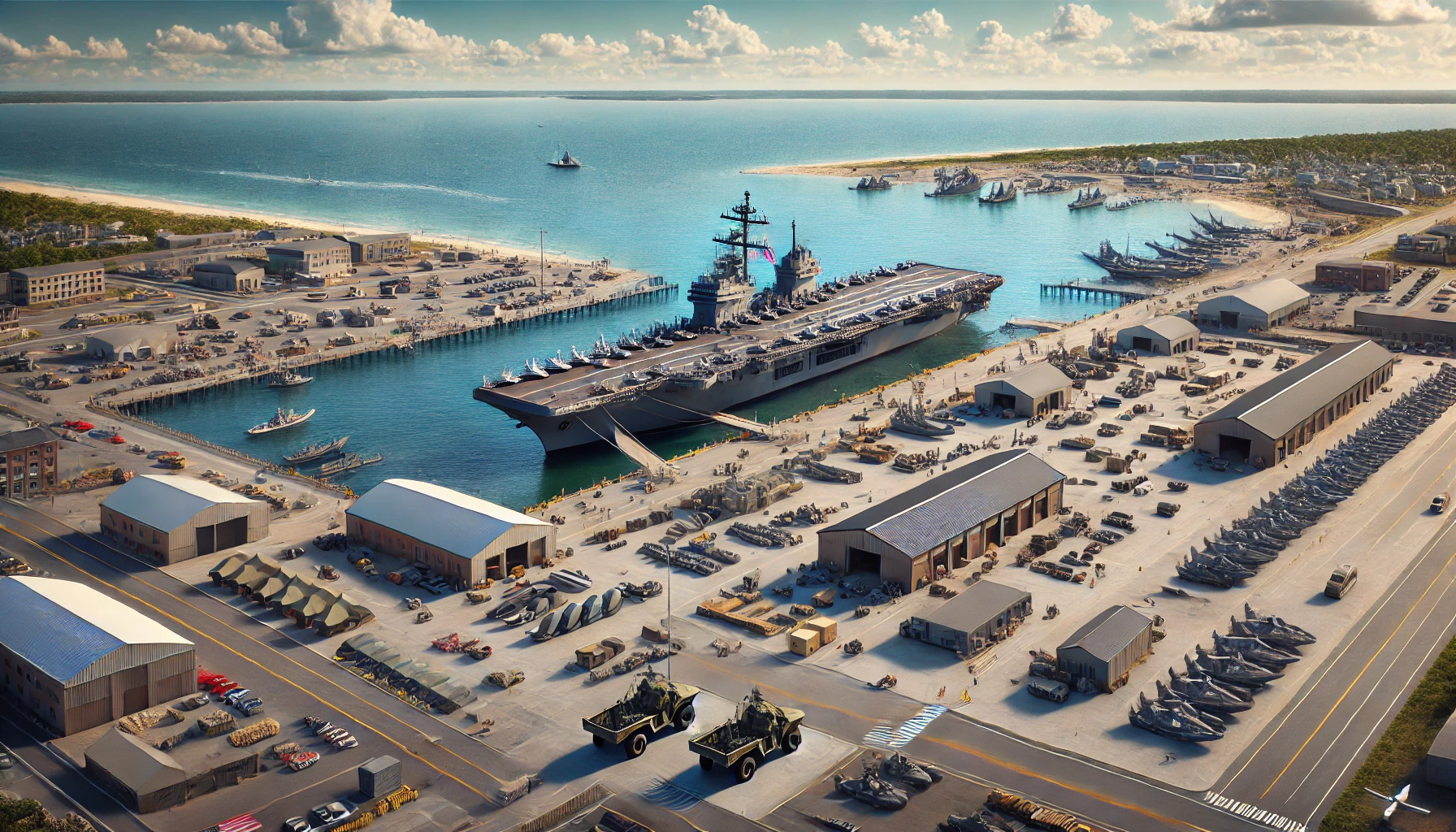
Joint Expeditionary Base Little Creek–Fort Story: A Comprehensive Guide
Introduction
Joint Expeditionary Base (JEB) Little Creek–Fort Story is one of the most significant naval installations in the United States, playing a crucial role in amphibious and expeditionary warfare training. Located in Virginia Beach, Virginia, JEB Little Creek–Fort Story serves as a key hub for the U.S. Navy, Marine Corps, Army, and other military branches engaged in joint maritime operations.
This blog provides an in-depth look at the history, operations, tenant commands, training missions, and community impact of JEB Little Creek–Fort Story. Whether you're a military professional, history enthusiast, or Virginia resident, this guide will give you a complete understanding of this strategic military installation.
History of JEB Little Creek–Fort Story
The origins of Joint Expeditionary Base Little Creek–Fort Story date back to World War II, when both installations played pivotal roles in training and logistics for amphibious warfare.
Little Creek Naval Amphibious Base
Established in 1942, Naval Amphibious Base Little Creek (NAB Little Creek) was initially designed to train sailors and Marines for amphibious assaults during WWII.
The base rapidly expanded, hosting landing craft units, amphibious training schools, and logistics commands.
During the Cold War and beyond, NAB Little Creek evolved into the primary homeport for East Coast-based amphibious forces, housing Special Warfare units and Naval Expeditionary forces.
Fort Story
Originally a Coast Artillery site dating back to 1914, Fort Story became an essential part of Army amphibious operations training.
The installation was later designated as a Joint Logistics Over-the-Shore (JLOTS) training facility, used for moving troops and supplies onto beaches without port infrastructure.
Fort Story’s lighthouses and historical sites also make it a landmark in Virginia Beach military history.
In 2009, the two installations were merged into Joint Expeditionary Base Little Creek–Fort Story (JEBLC-FS) as part of the Base Realignment and Closure (BRAC) program. Today, it serves as the largest naval amphibious training base in the world.
Base Operations and Mission
JEB Little Creek–Fort Story supports a diverse range of military operations, training programs, and logistics support for expeditionary forces.
Primary Missions:
Amphibious Warfare Training – Serving as the main training ground for amphibious assault and naval expeditionary operations.
Special Warfare Operations – Supporting Naval Special Warfare Groups, SEAL teams, and Marine Expeditionary Units (MEUs).
Joint Logistics Over-the-Shore (JLOTS) Operations – Training Army and Navy personnel in ship-to-shore logistics and beach landing techniques.
Naval Construction and Engineering – Home to Seabees and Navy Civil Engineer Corps who support expeditionary construction efforts.
Maritime Security Operations – Training forces for coastal defense, harbor security, and anti-terrorism measures.
With over 14,000 active-duty personnel and 3,000 civilians, the base provides critical combat readiness training while supporting U.S. national security interests.
Tenant Commands and Units
JEB Little Creek–Fort Story hosts over 150 tenant commands, making it one of the most diverse military installations in the country.
Key Units Stationed at JEBLC-FS:
Navy Expeditionary Combat Command (NECC) – Overseeing Naval Construction Battalions (Seabees), Riverine Forces, and Explosive Ordnance Disposal (EOD) teams.
Naval Special Warfare Group 2 – The East Coast hub for U.S. Navy SEAL Teams, supporting special operations missions.
Expeditionary Strike Group 2 – Coordinating Navy and Marine Corps amphibious operations.
U.S. Army 11th Transportation Battalion – Conducting Joint Logistics Over-the-Shore (JLOTS) training.
Coast Guard Atlantic Area Command – Providing maritime law enforcement and homeland security.
Navy Military Sealift Command (MSC) – Managing the logistics fleet supporting naval operations worldwide.
With these highly specialized units, JEB Little Creek–Fort Story plays a critical role in global military readiness and power projection.
Training Facilities and Capabilities
JEBLC-FS is designed to simulate real-world combat environments, preparing military personnel for complex missions worldwide.
Notable Training Areas:
Amphibious Assault Training Areas – Simulating beach landings and ship-to-shore operations.
Expeditionary Warfare Training Groups – Conducting training for SEALs, Marine Raiders, and special forces.
Urban Training Villages – Replicating real-world urban combat and security operations.
Naval Dive and EOD Training Centers – Providing advanced underwater demolition and mine clearance training.
Airborne and Rappelling Courses – Allowing paratroopers and special forces to practice air insertion techniques.
These facilities ensure that JEBLC-FS personnel are prepared for any combat scenario, from counter-terrorism to large-scale amphibious invasions.
Community Impact and Economic Contributions
As one of the largest employers in the Hampton Roads region, JEBLC-FS significantly contributes to the local economy and community development.
Economic Impact:
The base generates an estimated $2 billion annually for the local economy.
It supports thousands of military families, contractors, and civilian employees.
Local businesses benefit from military spending on housing, retail, healthcare, and education.
Community Engagement:
Military-Civilian Partnerships – Collaborations with Virginia Beach and Norfolk businesses to improve infrastructure and public services.
Veteran Support Programs – Helping transitioning service members find civilian careers.
Environmental Conservation Efforts – Preserving coastal habitats and wetlands around Fort Story.
The base fosters strong military-community relations, ensuring a positive impact on Virginia Beach and Hampton Roads.
Modernization and Future Initiatives
JEBLC-FS continues to adapt to new threats and technological advancements, ensuring its relevance in 21st-century warfare.
Key Modernization Projects:
Expanded Cyber Warfare Training Programs – Enhancing military cyber defense capabilities.
Upgraded Amphibious Assault Vehicles – Integrating next-generation landing craft and hovercraft technology.
Naval Special Warfare Upgrades – Improving training facilities for SEAL teams and special operations forces.
Renewable Energy Initiatives – Reducing the base’s carbon footprint with solar and wind energy projects.
As global security challenges evolve, JEB Little Creek–Fort Story remains at the forefront of military innovation and readiness.
Conclusion
Joint Expeditionary Base Little Creek–Fort Story is more than just a military installation—it is a strategic powerhouse supporting U.S. military dominance worldwide. With its rich history, state-of-the-art training facilities, and a broad range of military units, JEBLC-FS is essential to naval expeditionary warfare and joint operations.
Whether supporting global amphibious missions, special forces operations, or logistics deployments, this base continues to be a pillar of U.S. defense strategy. As military technology and tactics evolve, JEB Little Creek–Fort Story will remain a crucial asset in national security and global military readiness.